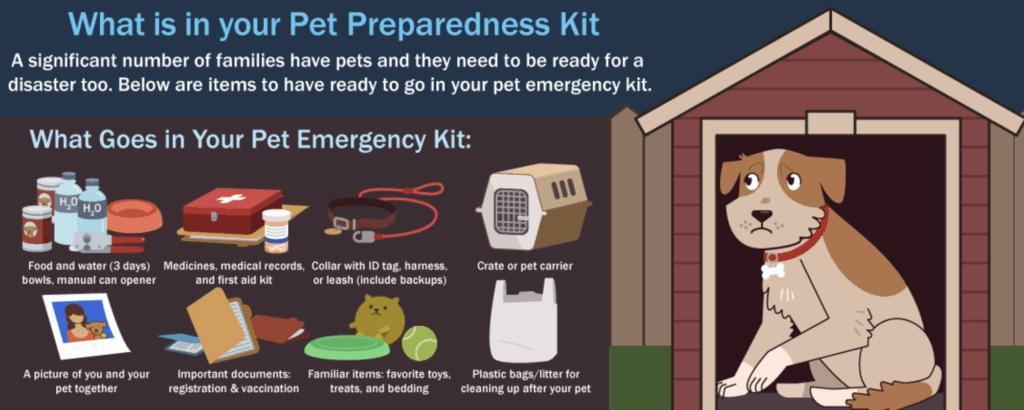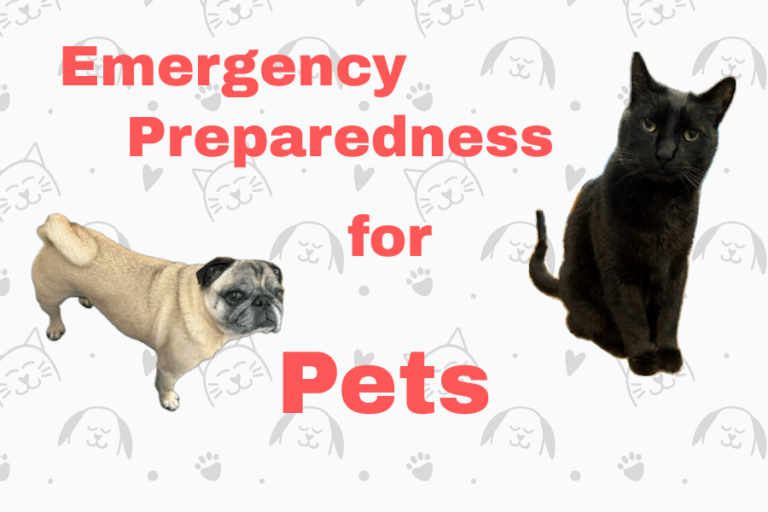Corey Cartwright, Lake Oswego Community Service Officer, spent time with PNA Area 10 Rep and Emergency Prep and Response Coordinator, David Westerdahl to discuss safeguarding your pets before and during emergencies. Community Officer Cartwright is based at Lake Oswego Police Department in our downtown neighborhood.
David: Could you share a bit about your background and what drew you to your role as a Community Service Officer?
Community Officer Cartwright: My journey to becoming a Community Service Officer (CSO) began as a second career. For many years, my wife and I were self-employed in retail. During that time, we came to truly appreciate the role law enforcement played in our daily operations. I especially admired how officers responded during some of our most challenging moments, as they were always calm and reassuring.
When it was time to move into a new field, I realized the CSO position aligned perfectly with the skills I’d developed in retail, while also giving me the opportunity to support others the way officers once supported us.
One of my favorite parts of the job is working with the animal citizens of Lake Oswego. Though I might be a wee bit partial to dogs (sorry, cats), I genuinely enjoy helping people, pets, and wildlife alike.
I love this job and feel incredibly fortunate to be a part of the Lake Oswego Police Department (LOPD).
David: What key information would you like the residents of Lake Oswego to know about safeguarding their pets before and during emergencies?
Community Officer Cartwright:
1. Ensure your own safety first.
You’ll be much better prepared to care for your pets if you’re in a safe place. Any pet owner will tell you: animals can sense when their humans are stressed. If you’re calm and secure, the evacuation process will go more smoothly for everyone involved.
2. Plan and practice evacuation procedures.
Have a safe and secure method for transporting every pet, whether that’s a crate, trailer, or harnessing system that stays connected to you. Practice using this system with your pet in advance to reduce stress and make it easier to act quickly in a real emergency.
3. Make sure all pets have up-to-date identification.
- For crated or trailered animals, attach an ID card with a photo of the pet, their name, your contact info, and any medical information (medications, allergies, etc.).
- Ensure every pet is microchipped and that the contact info is current.
- Consider listing an emergency contact outside the area, in case you can’t be reached.
- Have ID tags or collars on each pet with your name and number.
4. Prepare an emergency kit for each pet.
There are many excellent online resources for creating pet emergency kits. Two I highly recommend:
And remember: Practice! Practice! Practice!

David: What advice do you have for selecting a pet-friendly emergency shelter?
Community Officer Cartwright:
Start early—don’t wait until an emergency to figure this out.
- Identify friends or family outside your immediate area who can shelter you and your pet.
- If that’s not an option, research pet-friendly hotels, and check whether they’ll waive pet restrictions during emergencies.
- Keep this list in your evacuation kit or with your emergency plan.
- Network with your neighbors. You might not be home when disaster strikes, and a trusted neighbor could be key to getting your pet to safety
David: Can you recommend any nearby pet-friendly shelters?
Community Officer Cartwright: Fortunately, we have many pet-friendly hotels in Lake Oswego and the greater Portland area. Before an emergency, contact hotels outside our immediate region and ask about their pet policies. Some may waive restrictions during disasters.
Also be sure to ask:
- Are there limits on the number of pets?
- Are there restrictions on pet size or species?
Knowing these answers in advance can save valuable time in a crisis.
David: What essential first aid supplies should every pet owner have, and what basic first aid tips would you offer?
Community Officer Cartwright: Many common first aid supplies can be used for pets, but there are a few additional items you may want to include:
- Saline eye wash pods – For rinsing eyes and wounds.
- Nail clippers – Helpful in many situations.
- Styptic sticks or powder – Stops minor bleeding from small cuts or torn nails.
- Tick removal tool – Compact and easy to use.
- Sedatives-For anxious pets. Ask your vet.
I highly recommend downloading the American Red Cross Pet First Aid App. It offers step-by-step guidance for handling common emergencies and helps with decision-making in stressful situations.
David: Do you think pet owners should practice evacuating with their pets?
Community Officer Cartwright: Absolutely! Normalize the process of moving your pet from place to place. Practicing evacuation makes a real emergency less chaotic—and also helps reduce anxiety for everyday activities, like trips to the vet or boarding.
David: How important is it for pet owners to understand their pets’ potential behavior in stressful or unfamiliar situations?
Community Officer Cartwright: It’s very important. Pay attention to how your pet reacts in different environments:
- Are they anxious around strangers?
- Are they likely to bolt through an open door?
- Do they behave aggressively around other animals?
These are critical factors to consider when designing your evacuation plan. Anticipating behavioral challenges helps ensure a safer, smoother process—for both you and your pet.
And remember: your pet takes cues from you. By staying calm and being prepared, you’re helping your pet stay calm too.
David: Are there other tips or community-specific recommendations you’d like to share with our readers?
Community Officer Cartwright: Yes—use your local resources:
- Clackamas County Dog Services: (link)
- Oregon Humane Society: (link)
- Clackamas County Disaster Management (link)
- American Red Cross (link)
- And of course, the Lake Oswego Police Department! You’re always welcome to contact us and ask to speak with a CSO. We’re available 7 AM – 5 PM, 7 days a week. (link)
- Most of all: Practice and prepare! The more planning you do now, the safer and calmer you—and your pets—will be when it matters most.very important. Pay attention to how your pet reacts in different environments:


